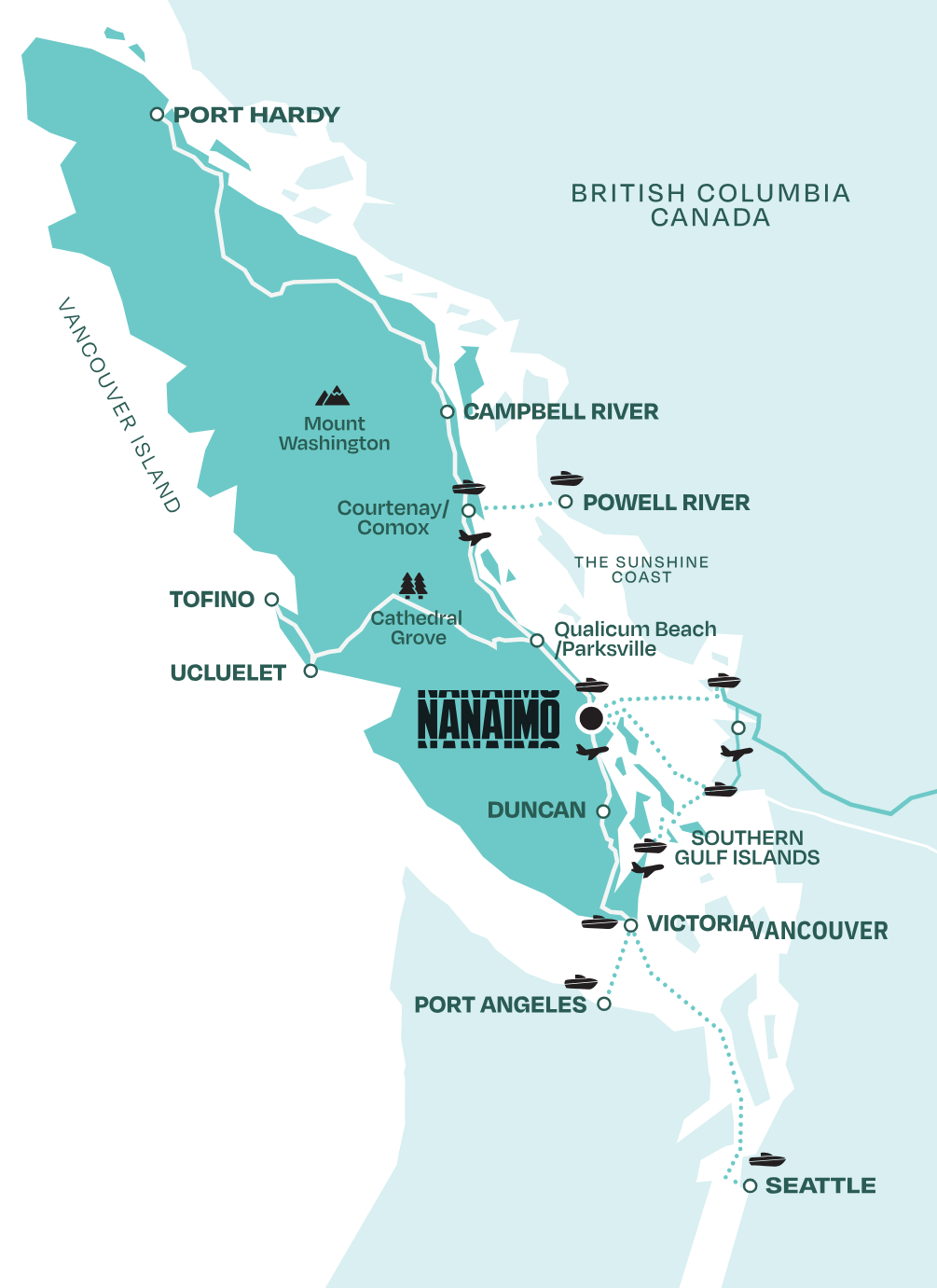Cities have always grown where geography creates opportunity. Rivers, ports, and crossroads have historically drawn trade, talent, and innovation. Nanaimo is a modern example of how geography drives prosperity. Its location is more than just a point on the map; it’s a competitive advantage shaping the future of Vancouver Island. Located at the centre of Vancouver Island, Nanaimo is the regional hub with direct sea, air, and highway links to a market reach of over 1 million people within 90 minutes. This central position not only supports freight and passenger movement but also strengthens Nanaimo’s role as an economic engine for Vancouver Island and the BC coast.
Connecting a Million People
Within a 90-minute radius, Nanaimo has direct access to more than 1 million people. The Island Highway links Victoria and northern communities, while Hullo, BC Ferries, and air connections extend reach to Greater Victoria, the Lower Mainland, and beyond.
With 377,000 passengers in 2023 and a recent $29 million runway and terminal upgrade, the Nanaimo airport is ready to accommodate larger aircraft, grow domestic flights, and strengthen its role in supporting regional ground and sea logistics.
A Modern Trade Hub
At the heart of the Island, Nanaimo is where sea, land, air, and ideas converge. The Port of Nanaimo handled 3.9 million metric tonnes of cargo in 2023, making it the Island’s busiest port and its main freight gateway. With the Duke Point expansion set to nearly double berth length and increase container capacity tenfold, Nanaimo is positioned for faster, greener, and more resilient trade.
Meanwhile, passenger connections are transforming mobility. Since launching in August 2023, Hullo ferries have carried nearly 1 million passengers (that’s over nine Nanaimos), providing unprecedented access between Nanaimo and downtown Vancouver.
Demographics and Momentum
Nanaimo itself is one of Canada’s fastest-growing urban centres. Its population reached 110,600 in 2024, up 10.2% over five years, driven by migration from across Canada and abroad. Projections put Nanaimo at 120,200 residents by 2029, expanding its consumer base and labour pool. This growth supports the 6,457 active business licences and more than 3,600 employer firms already operating here. With an unemployment rate of just 4.8%, Nanaimo is outperforming the provincial average.
Geography as Catalyst
Just as rivers once carried goods to market, Nanaimo’s geography channels people and ideas. Its central location doesn’t just make it accessible; it makes it catalytic. Leaders, researchers, and skilled workers flow through the city, strengthening human capital across Vancouver Island and the Lower Mainland.
Looking Ahead
For policymakers, investors, and business leaders, the question is no longer whether Nanaimo’s geography matters but how its 1-million-person market reach can be leveraged to shape infrastructure, attract investment, and expand the Island’s role in the regional economy.
Words By Alec Hansen
